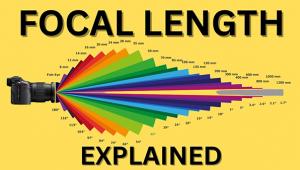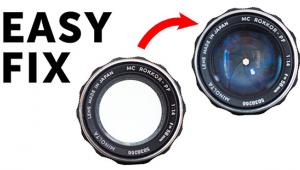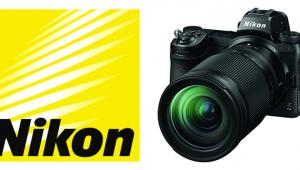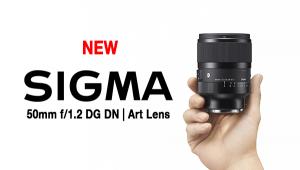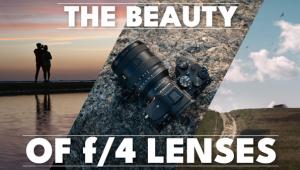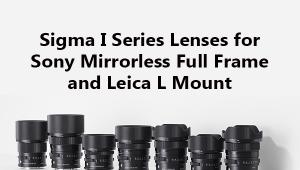Shutterbug’s Exclusive photokina Coverage; New Lenses For D-SLR And Micro Four Thirds Cameras: More Sensor Sizes (And Models) Complicate The Optics Issue
With the growing popularity of D-SLR cameras with sensors of various sizes, most of the manufacturers are working to expand their line of lenses. As expected, many of the latest products are “digital only”: designed for the majority of D-SLRs with the APS-C or Four Thirds size sensor. But (as specified in the text), some are multi-platform products suitable for all 35mm and digital SLRs, including those with the larger full-frame (24x36mm) sensors. As well, two new Micro Four Thirds lenses are also available for the Lumix DMC-G1, a camera without a reflex mirror, discussed in my D-SLRs report.
Some manufacturers are expanding their lines of lenses with ultrasonic focus motors and/or stabilizers. A more noteworthy trend, however, is the increasing number of existing lenses in new mounts (or new focus motors) to suit a wider number of cameras. An increasing number of the independent-brand Nikon mount lenses are being equipped with the motor that’s essential for autofocus with the D40/D40X and D60. And as Olympus, Pentax, and Sony aggressively develop their D-SLR lines, we’re seeing more lenses in mounts for these brands. Let’s start by taking a brief look at the lenses that are being modified for greater camera compatibility.
 |
|
|
Tokina announced that its new AT-X Pro SD 12-24mm f/4 (IF) DX zoom in Nikon mount will be available in a motorized version; this trend will continue across the Tokina line over the coming years. Tamron is even more aggressive in this respect, recently adding the focus motor to several Nikon mount lenses; their latest announcement indicates that the multi-platform SP AF90mm F/2.8 Di 1:1 Macro and SP AF70-200mm F/2.8 Di LD [IF] Macro lenses will be suitably equipped. The Tamron tele-zoom will also be made in new mounts, for Pentax and Sony.
 |
|
|
Tamron’s smaller (Di-II or DX format) SP AF10-24mm F/3.5-4.5 Di-II LD Aspherical [IF] zoom—with a High Index/High Dispersion glass element, two LD elements, a glass-molded aspherical element plus three hybrid aspherical elements—will also be equipped with the “focus motor for Nikon.” Sigma’s 4.5mm and 10mm f/2.8 EX DC fisheye lenses, and the Sigma EX DG tele-converters, already available in several mounts, will also be manufactured in Sony and Pentax mounts. Another recent announcement indicated that the Sigma 50mm f/1.4 EX DG HSM lens will be available for the Four Thirds system (becoming a 100mm f/1.4 equivalent).
 |
|
|
New Canon Lenses
In order to compete with the independent-brand lenses, Canon has begun to manufacture their own EF-S 18-200mm f/3.5-5.6 IS zoom, a 29-320mm equivalent model with the latest Optical Image Stabilizer. The IS system is said to provide a four-shutter speed step advantage in camera shake compensation and its Panning mode is automatically activated when appropriate. This Canon zoom (72mm filter size; 21 oz; $700) features two UD and two aspherical elements. Its AF motor is conventional (micro) and not ultrasonic, perhaps in order to minimize the price of the lens.
 |
|
|
Ideal for any of the full-frame EOS cameras (but compatible with the other EOS models, too), the very rugged, weather-sealed EF 24mm f/1.4L II USM model ($1250, estimated) features an unusually wide aperture. This version II model has been extensively redesigned and features a Sub Wavelength structure Coating (SWC) to dramatically reduce ghosting and flare, a circular aperture for pleasing bokeh, USM focus motor with full-time manual focus, and environmentally-friendly lead-free glass. Note, too, that this pro lens (77mm filter size; 22.9 oz) includes two pieces of UD (Ultra low Dispersion) glass and GMo aspherical elements to correct all types of aberrations while a floating mechanism should provide crisp corner-to-corner detail at every focal length.
 |
|
|
Independent-Brand Zooms
Likely to be a best seller for Tamron, the new AF18-270mm F/3.5-6.3 Di II VC LD Aspherical (IF) Macro in Canon and Nikon mounts (including a built-in focus motor) is a 27-405mm or 29-432mm equivalent zoom (depending on the camera’s sensor size). It should provide fine image quality thanks to two low dispersion and three aspherical elements; Tamron’s proprietary Vibration Compensation stabilizer is a definite bonus. Quite compact (72mm filter; 19.4 oz; $600), the lens also boasts close focusing (to 19.3”) and an optical system that modifies the angle of light rays to ensure optimal edge brightness/sharpness.
 |
|
|
Shown only as a prototype of a product in development at photokina, the Tokina AT-X 16.5-135mm f/3.5-5.6 DX zoom will be initially available in Canon and Nikon mounts (presumably including the necessary focus motor for the D40/40X and D60). This wide angle to telephoto (27-219mm or 25-206mm) lens will probably be rugged and is likely to feature a high-tech optical formula, like the other recent AT-X series products.
 |
|
|
Although it resembles the earlier non-HSM version, the brand-new Sigma 24-70mm f/2.8 EX DG HSM lens (82mm filter; weight N/A; $750, estimated) is a superior product, with extraordinary low dispersion glass, two special low dispersion elements, and three aspherical lenses to correct all types of aberrations. Super Multi Layer Coating reduces flare and ghosting while the ultrasonic HSM motor ensures quiet and fast autofocus. The rounded nine-blade diaphragm creates an attractive blur in defocused highlight areas. This zoom will be available in Canon, Nikon, Pentax, Sigma, and Sony mounts; ultrasonic autofocus will function with nearly all current D-SLRs.
 |
|
|
Nikon Lens
Introduced in celebration of the 75th anniversary of Nikkor lenses, the all-new multi-format AF-S Nikkor 50mm f/1.4G lens (58mm filter; 9.9 oz; $440) includes the latest Nikon technology. Features include Extra Low Dispersion (ED) glass, Super Integrated Coating for maximum flare control, a rounded diaphragm opening as well as the ultrasonic Silent Wave Motor for fast autofocus and full-time manual focus. Optimized for full-frame sensor FX cameras (D3 and D700), this lens also works perfectly with Nikon SLRs that use the smaller DX sensor, as a 75mm f/1.4 equivalent, useful for some portraiture. The entirely new optical formula is said to effectively correct sagittal coma flare and coma aberration for superb image quality.
 |
|
|
